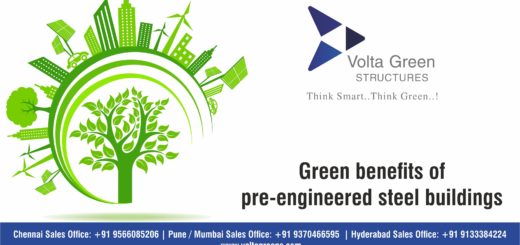Can Composite Structures and Steel be used in Medium-Rise Buildings

India’s real estate sector is set to get a huge boost, especially after 2016 turned out to be the second-best year in terms of private equity investments. The Goods and Sales Tax as well as the Benami Property Act will also impact real estate developers who will look to change their business models accordingly.
Office space will be one of the key drivers of the market, with more companies looking at co-working spaces to take advantage of the cost-efficiency they provide. Most of these hybrid spaces are taken up by startups and companies who need to set up their client servicing teams closer to their client sites as they would have lower occupancy levels than a full-blown corporate office housing the majority of employees.
In terms of costs, the major component for most buildings is the foundations. Since a steel frame would only impose about half the load a concrete one would, the foundations can be much smaller and thereby reduce the costs.
Steel structures also have the advantage of getting erected at a faster rate, and as a result the constructions can be completed in a shorter duration than would otherwise be the case. This would translate into further benefits such as an earlier return on investments.
However, high rise building construction has not been the norm in India, especially when compared to other developed countries – instead there are more medium rise buildings. So the question arises, can composite structures and steel be used for these constructions.
The same advantages that high rise building construction has when done using composite structures and steel are also equally applicable to medium rise buildings.
Universal Column sections should be used for columns in the frame structure of a medium rise building as they are quite compact and have high steel thickness. An advantage of using Universal Columns is there will not be a problem with rusting as a result of the larger thickness in steel.
There is always a concern about safety and whether composite structures are safe to build in comparison to an RCC building. Most of the sheets used in frame structure are prefabricated and cut to the required size as drawn up in the building plans, and are similar to RCC properties. The studs required to fix the welded mesh can be welded at the site with just a single machine that doesn’t require more than one or two hours of training.
A benefit of steel buildings is that they can be versatile and come with adjustable panels that can be used as per individual requirements. More importantly, steel buildings are more capable of withstanding unfavorable weather conditions. Whether it is a hurricane or an earthquake, these structures have a better chance of withstanding the extreme conditions.
Since steel can always be re-used for any other use, disassembling a steel building does not incur any loss as would be the case in the demolition of a regular concrete structure. The steel can be re-used for any other purpose as it would not lose its strength.
Steel buildings are also easy to maintain, thus saving costs as compared to traditional buildings, as well as being environment friendly.
Volta Green Structures have always been at the forefront of using technology and new building developments to construct all kinds of buildings, and composite structures are one way to reduce costs and improve efficiency.
Volta Green Structures understands the need to always embrace the latest developments in the field, and ensure that every avenue is explored to maximize the time saved in constructing buildings, whether it is for office use or affordable homes.










